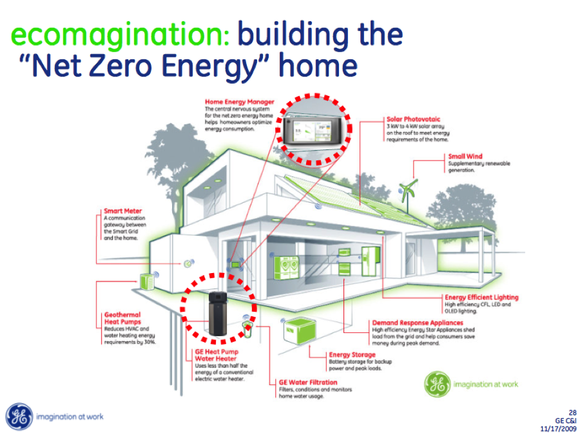If you are new to Net Zero Energy homes, this page will give you a top level summary of the important features of a NZE Home.
While the concept of generating as much energy/electricity as the home consumes is easy to conceive, the approach to achieving the goal requires a great deal of energy strategy. Fundamentally, before sizing a solar PV system, the aim of minimizing power consumption must be the goal. Having to oversize your PV system because your home is wasteful, would be wasting your $.
Houses consume almost 40% of the energy produced in America. To minimize energy consumption in the home requires the following approaches:
- Home siting and orientation: Large south facing windows can provide daylight for the home, but can also cause overheating if windows don’t have correct shading. Use of daylight minimizes daytime demands for electricity for lighting. See Siting and Shading
- Proper insulation and building “tightness” must be employed to minimize heating and A/C demand. Much of our energy is wasted by leaking out walls, windows, roof and floor. Traditional 2×4 construction is quite “leaky” and so different construction techniques are employed for NZE Homes. See Thermal Bridging.
- Providing a tight building envelope will minimize energy loss, but will result in requirements for ventilation to move the captured air. Heat exchangers are employed to capture heat while rejecting stale air. NZE Homes require different systems, equipment and controls to provide comfort for occupants. HVAC ducting is also a traditional source of energy loss (usually located in unconditioned areas), and would be a consideration in the design of a new ZNE home.
- Appliances must be chosen to minimize electricity consumption. Using appliances highly rated by EnergyStar will reduce consumption. See Choosing your appliances.

There is a discussion between aficionados about whether it’s NZE or ZNE. There is more info on what goes into this equation here: NZE Definitions